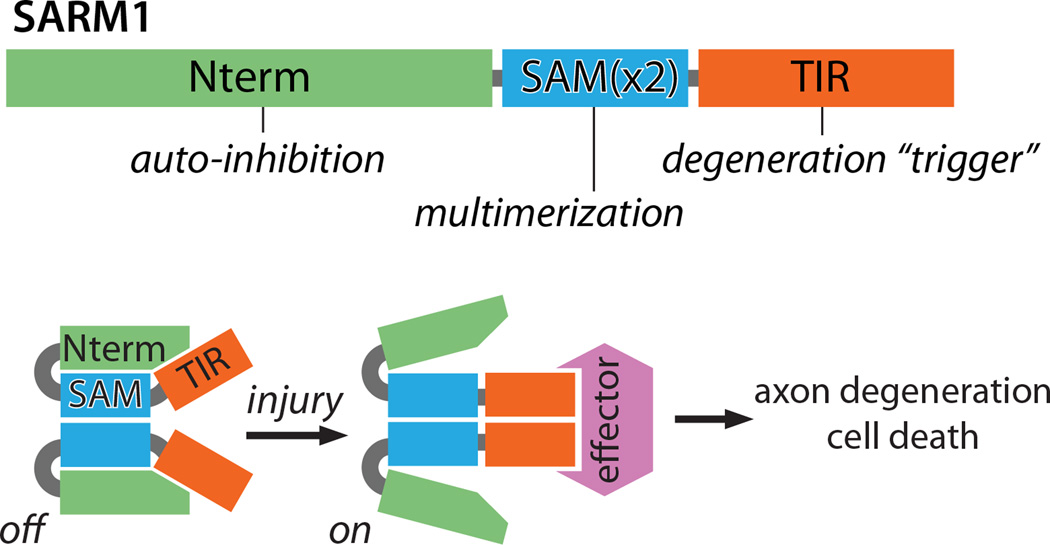Figure 3.
A working model of SARM1 auto-inhibition and activation upon injury. TOP: SARM1 is made up of three regions: 1) an auto-inhibitory N terminus (Nterm) comprised of multiple armadillo repeat motifs, 2) tandem SAM domains that mediate SARM1-SARM1 binding (SAMx2), and 3) a TIR domain that triggers axon degeneration upon multimerization. BOTTOM: SARM1 multimers are inactive (auto-inhibited) in uninjured axons. Injury leads to SARM1 activation, perhaps through release of inhibition, exposing TIR domain multimers that transmit a pro-destructive signal to unknown effector molecule(s).

